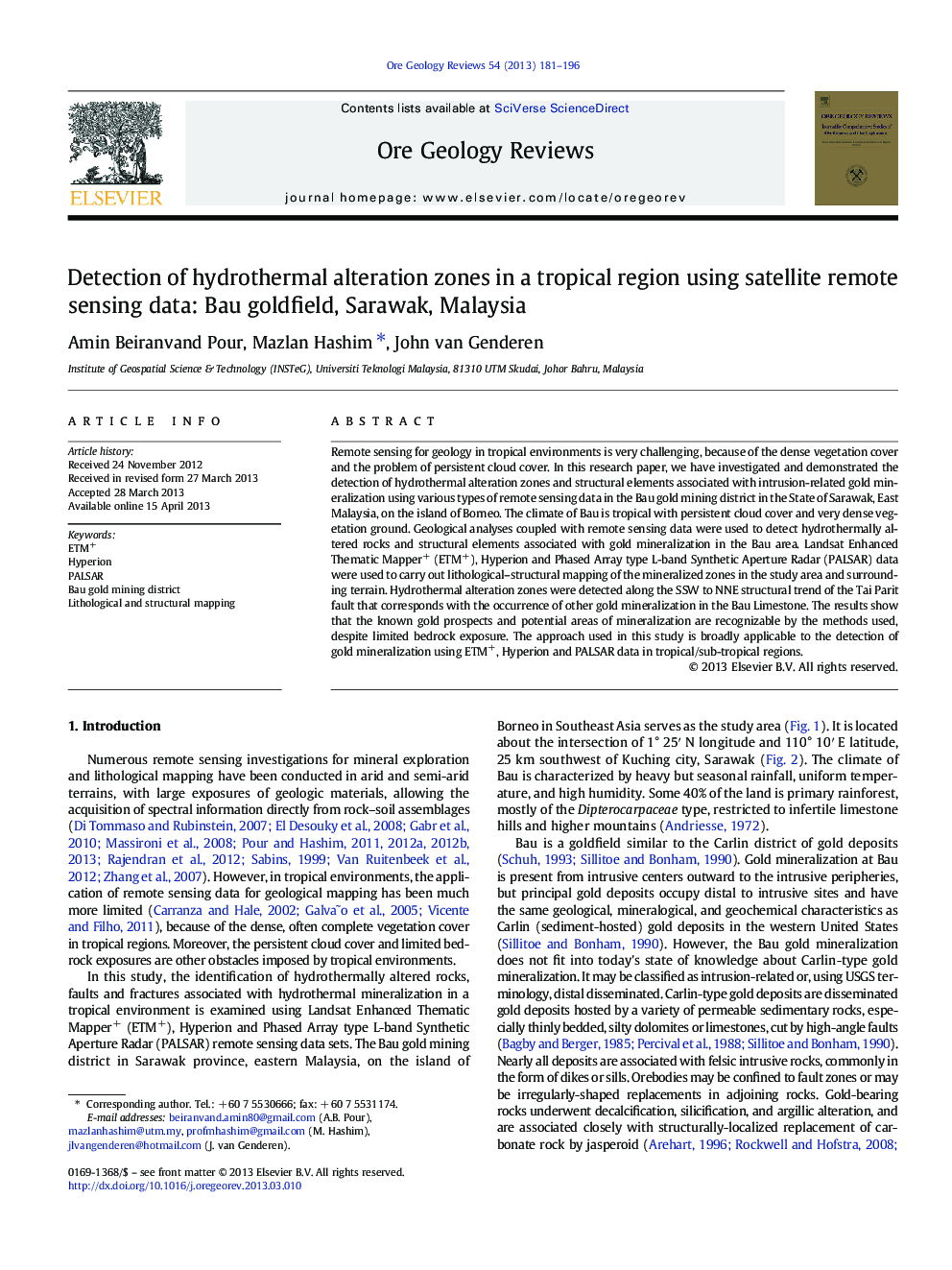| Article ID | Journal | Published Year | Pages | File Type |
|---|---|---|---|---|
| 4697469 | Ore Geology Reviews | 2013 | 16 Pages |
•Satellite remote sensing data apply for geological applications in tropical regions.•Hydrothermal zones and structural elements are detectable with gold mineralization.•The approach is broadly applicable for gold exploration in the tropics.
Remote sensing for geology in tropical environments is very challenging, because of the dense vegetation cover and the problem of persistent cloud cover. In this research paper, we have investigated and demonstrated the detection of hydrothermal alteration zones and structural elements associated with intrusion-related gold mineralization using various types of remote sensing data in the Bau gold mining district in the State of Sarawak, East Malaysia, on the island of Borneo. The climate of Bau is tropical with persistent cloud cover and very dense vegetation ground. Geological analyses coupled with remote sensing data were used to detect hydrothermally altered rocks and structural elements associated with gold mineralization in the Bau area. Landsat Enhanced Thematic Mapper+ (ETM+), Hyperion and Phased Array type L-band Synthetic Aperture Radar (PALSAR) data were used to carry out lithological–structural mapping of the mineralized zones in the study area and surrounding terrain. Hydrothermal alteration zones were detected along the SSW to NNE structural trend of the Tai Parit fault that corresponds with the occurrence of other gold mineralization in the Bau Limestone. The results show that the known gold prospects and potential areas of mineralization are recognizable by the methods used, despite limited bedrock exposure. The approach used in this study is broadly applicable to the detection of gold mineralization using ETM+, Hyperion and PALSAR data in tropical/sub-tropical regions.
